It has long been one of Mrs Outdoorsman's "bucket list" items to attend a performance at The Metropolitan Opera in New York City, at Lincoln Center. We both like opera: The Met regularly schedules "Live In HD" performances in our local multiplex theater, which we attend; periodically a local opera company, Opera Roanoke, puts on a performance. We go to those, but nothing, and I mean nothing, compares to the spectacles mounted at The Met. The Met is THE opera company, the most famous in the country, right up there with the biggest and most storied houses of Europe.
I know that opera isn't to everyone's taste—when I was a kid my father used to play opera records and I thought they were boring—but listening to opera is a vastly different proposition than actually seeing it. A full-blown, full-dress production by a top-class company like The Met is something worth attending even if only once. It's not just the singing, it's everything: phenomenal sets, fantastic costumes, an incomparable orchestra, the whole package is an incredible experience.
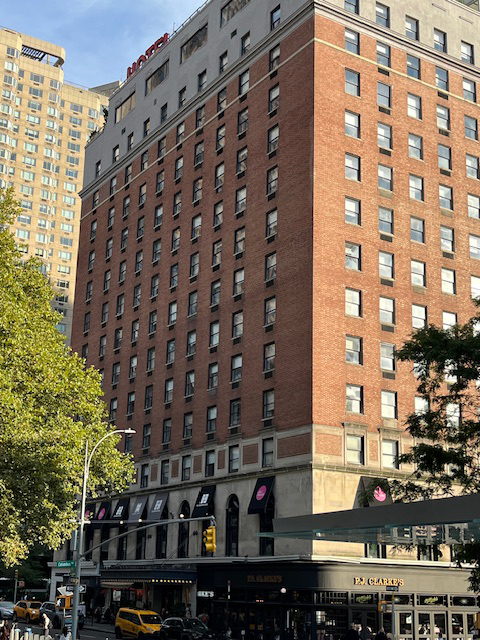
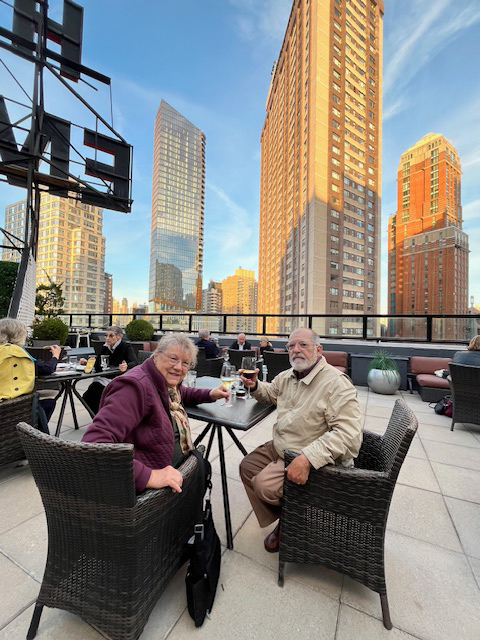 We went up to NY City via AMTRAK, which unfortunately meant leaving Roanoke at 6:15 AM, hence a 3:30 AM wakeup because it's nearly an hour to the station. Nine hours of jolting and thumping and banging later we got to NY about 3:00 PM. From the train station we took an Uber to the Empire Hotel on 63rd Street and Broadway. The Empire was built in 1922, but has been renovated periodically. The room was small but adequate and less expensive than it might have been. It was perfectly adequate for our needs. The location could not have been more convenient. We were no more than 100 yards from Lincoln Center. The Empire it was less expensive than some of the alternatives, which doesn't mean it was cheap: it just seemed that way in relation to everywhere else. The Empire also has a snazzy rooftop cocktail lounge where we had a glass of wine.
We went up to NY City via AMTRAK, which unfortunately meant leaving Roanoke at 6:15 AM, hence a 3:30 AM wakeup because it's nearly an hour to the station. Nine hours of jolting and thumping and banging later we got to NY about 3:00 PM. From the train station we took an Uber to the Empire Hotel on 63rd Street and Broadway. The Empire was built in 1922, but has been renovated periodically. The room was small but adequate and less expensive than it might have been. It was perfectly adequate for our needs. The location could not have been more convenient. We were no more than 100 yards from Lincoln Center. The Empire it was less expensive than some of the alternatives, which doesn't mean it was cheap: it just seemed that way in relation to everywhere else. The Empire also has a snazzy rooftop cocktail lounge where we had a glass of wine.
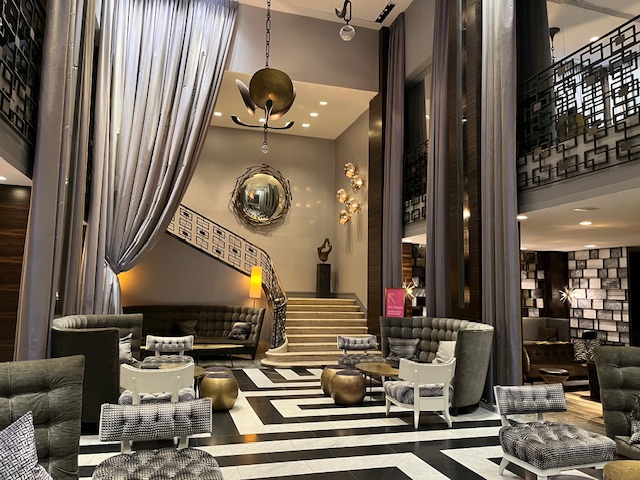
The Empire Hotel Lobby
I had some other things I wanted to do. Since our first opera production was on the Friday night that morning we went to the South Street Seaport Museum at the very tip of Manhattan Island. New York is a major seaport and has been since its founding. The Museum is geared around this, with exhibits of the history and the development of NY as the major port on the Atlantic seaboard.
When I was a teenager I sometimes went past the offices of the Cunard shipping line on lower Broadway. They had two huge models of their flagships, the original Queen Mary and Queen Elizabeth on display to catch the eye of passersby. That they did: I never failed to stop and admire them. Poor Queen Elizabeth burned and sank in Hong Kong and was scrapped; her sister Queen Mary is now a floating hotel in California. We have been lucky enough to cross the Atlantic four times in Queen Mary 2 and to have seen the model of Queen Elizabeth at the Peabody Museum in Boston, so a chance to see the fully-restored Queen Mary model wasn't to be passed up.
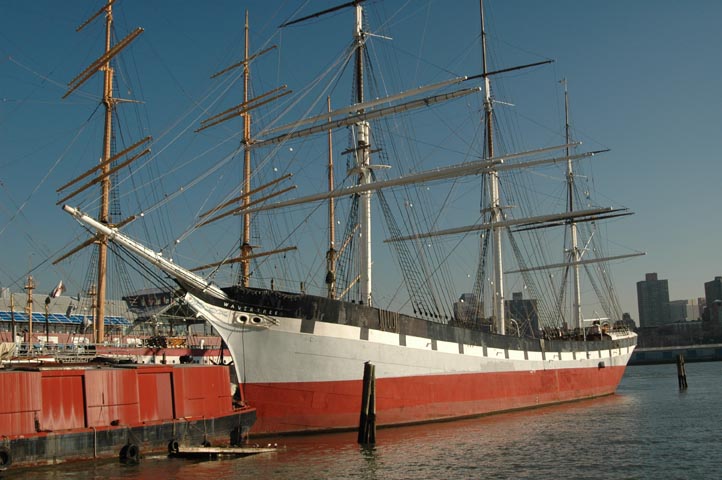
The Seaport Museum also has two ships: one, Wavertree (above) is a three-masted iron-hulled sailing vessel built in the 1880's. The other is the famous Ambrose lightship that used to mark the entrance to the channel leading to New York's harbor. Wavertree had exhibits that showed how the crew lived, ate, slept, and worked: their life was pretty grim by modern standards. One of the most impressive was a film of a sailing vessel rounding Cape Horn. You have to wonder how anyone survived the storms, especially in a ship with no power other than sails.
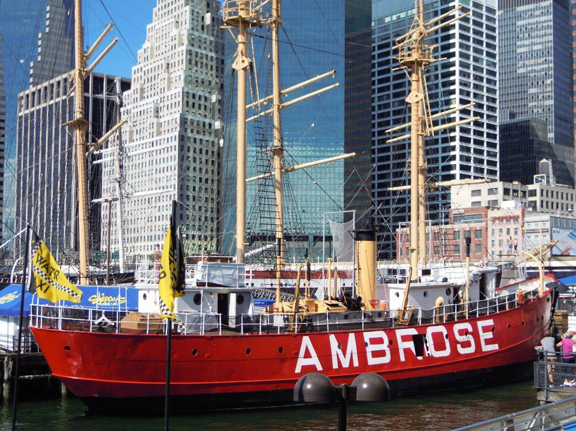
Ambrose was much smaller and she and her crew lived a more docile life. She stayed anchored at the opening of the channel to provide a mark for incoming ships, because it wasn't possible to build a lighthouse there. She's equipped with a pair of masts with lights, an incredibly loud bell, and an even louder foghorn. Crews of seven men were rotated periodically, had regular visits from supply vessels, and while they might have had to put up with noise, they didn't have to contend with much in the way of storms.
.jpg)
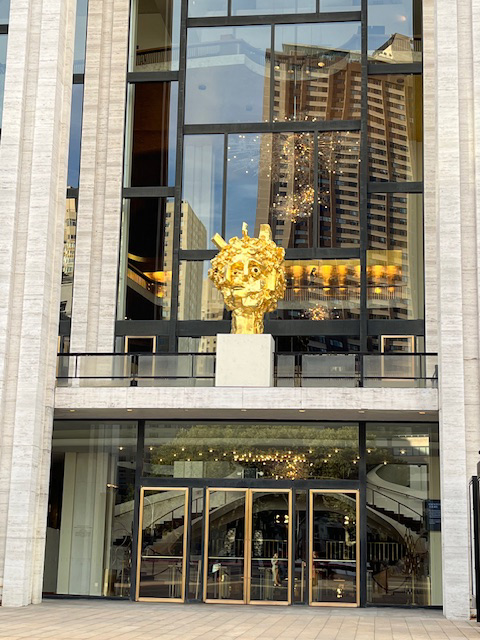
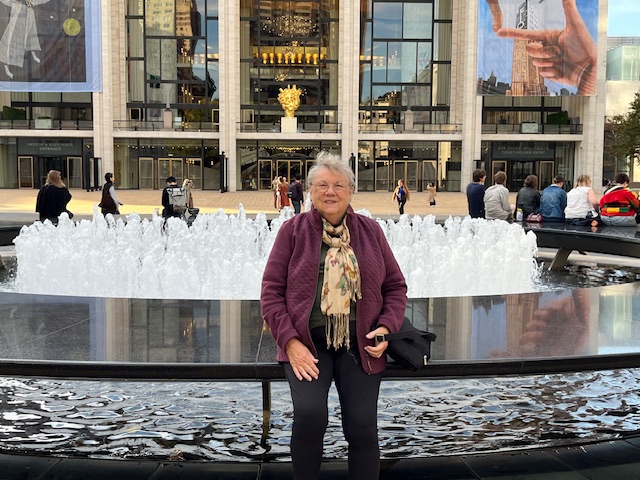
Lincoln Center, where The Met is located, is a pretty impressive campus, though the main building (vintage 1969) is showing its age a bit. It's a complex of buildings on the Upper West Side, a pretty tony (and expensive) part of Manhattan. Everything in Manhattan is expensive, but the Upper West Side is probably in the top 5% of NYC neighborhoods. Lincoln Center has a huge fountain in the courtyard that does squirting tricks like the one at the Bellagio Casino in Las Vegas, on a somewhat smaller scale. The theater itself is spectacular, as befits the productions it houses.
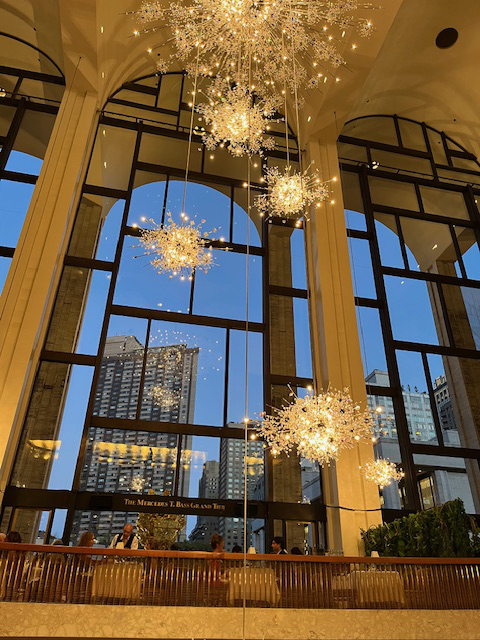
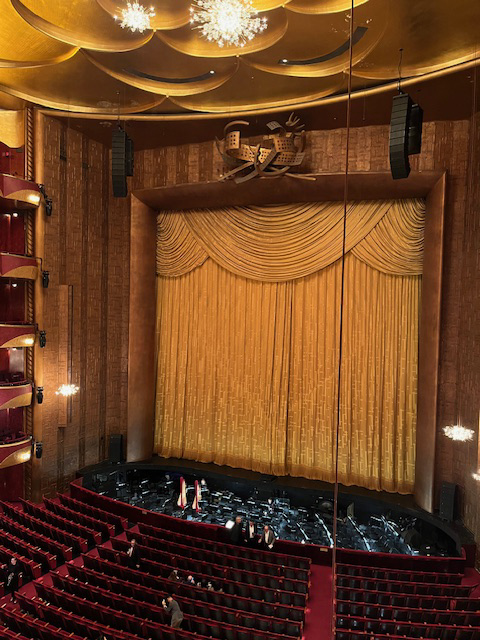
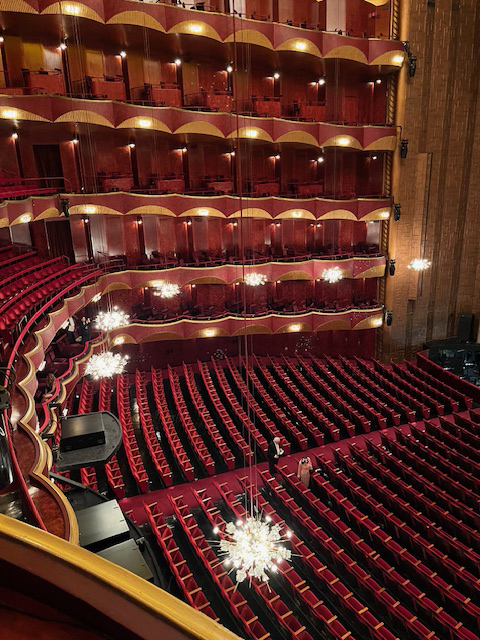
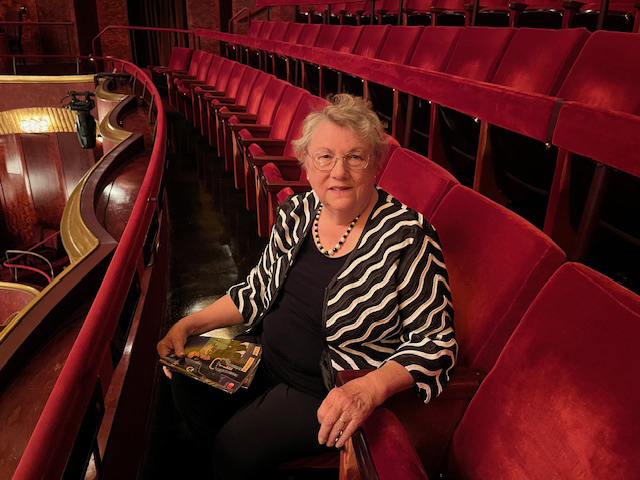
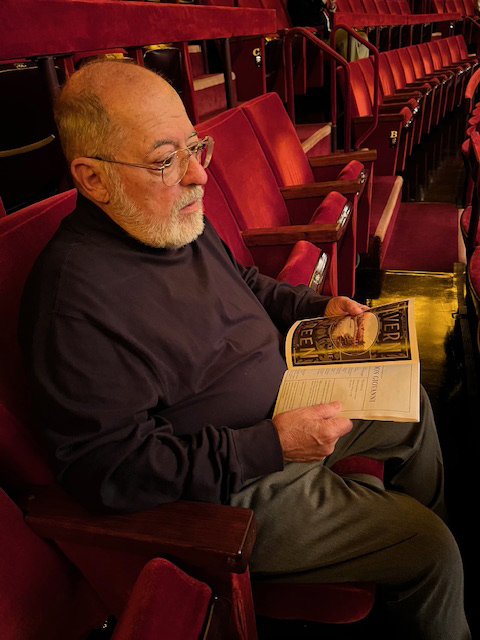
The first opera we attended, on Friday night, was a really spectacular production of "Turandot." By far the showiest opera I've ever seen. The costumes, the scenery, the technical aspects were simply amazing: when the curtain came up for Act II and revealed the set for the Emperor's Palace, the audience—myself included—gasped and burst into applause; It was—no other word will do—magnificent.
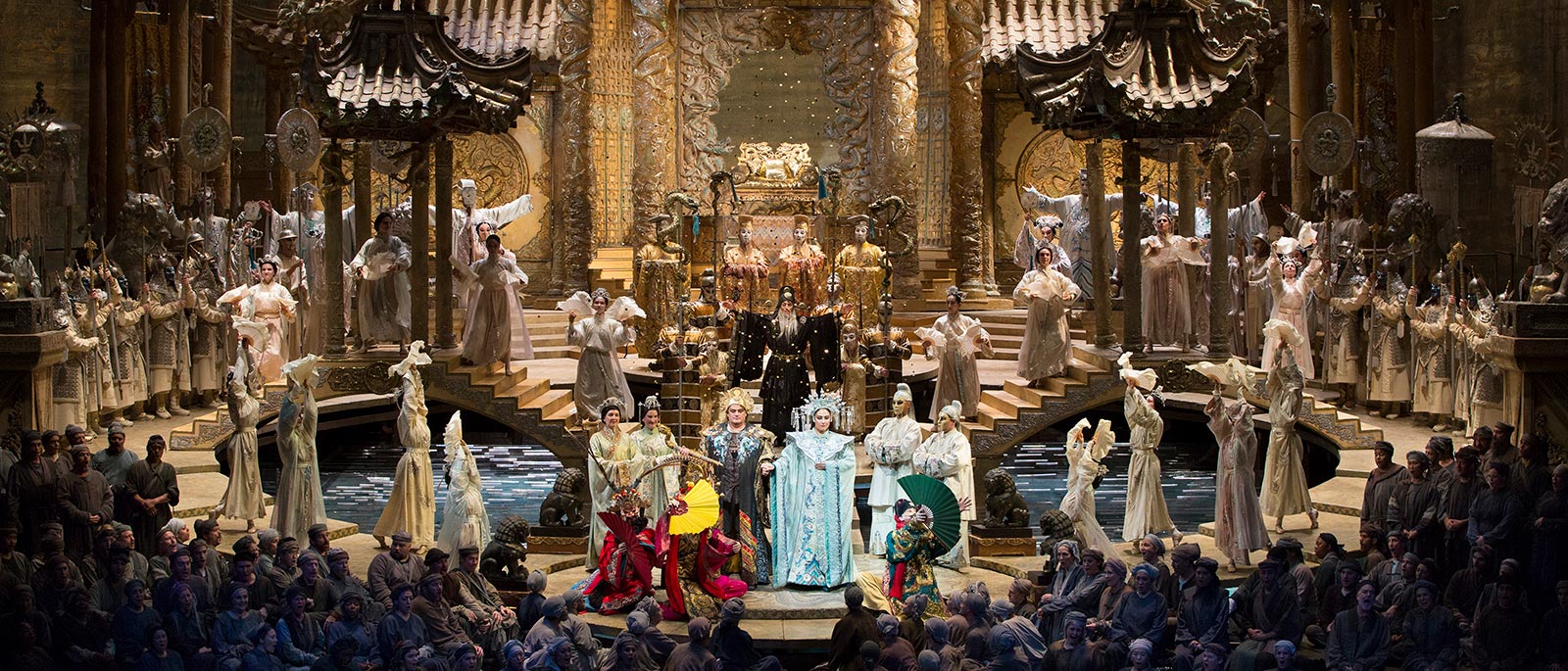
The following day we saw a matinee performance of "Don Giovanni," a very austere and decidedly different opera. The sets were minimalistic, nothing like "Turandot."
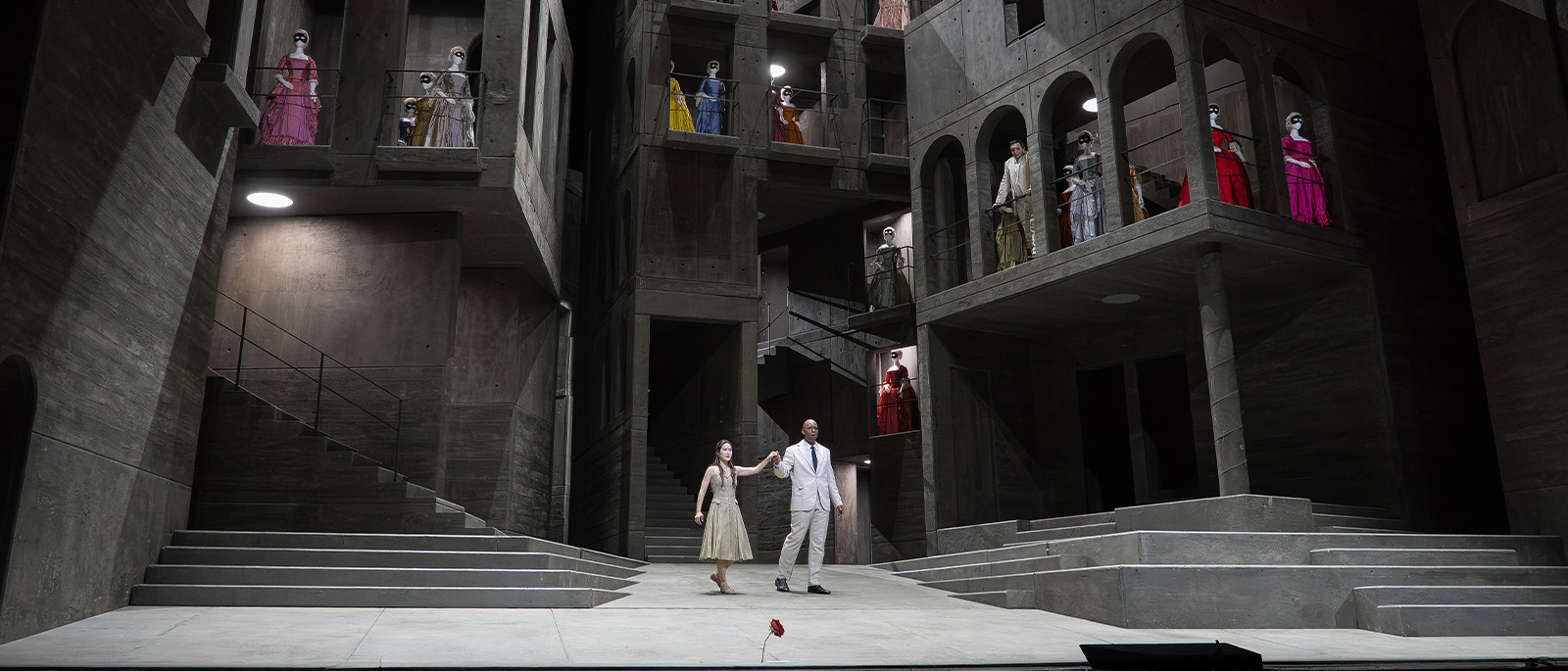
Lincoln Center's neighborhood is a very pleasant place. There's a small "pocket park" across 63rd Street from the Empire, a nice place to sit and watch the people go by. One thing about NY City I always forget about until I return is the dogs: many, many New Yorkers have dogs, not all of them small dogs. When I was a kid nearly everyone I knew had a dog. You will see people walking dogs all the time on the streets, in the pocket parks, and across the plaza at Lincoln Center. We saw everything from Pomeranians to Old English Sheepdogs; a Golden Retriever in a Manhattan apartment isn't really a practical proposition but they're there. I have to wonder where these mutts spend their days when the owner is at work. Dogs are as much a part of NYC life as they are in London or Paris.
All in all, though it was expensive but I'm glad we went. We're spending money like drunk Congressmen, but I can't take it with me. I grew up in NYC and if I had to I could live there again, but I'm damned glad I don't have to. 50+ years in small towns have spoiled me.